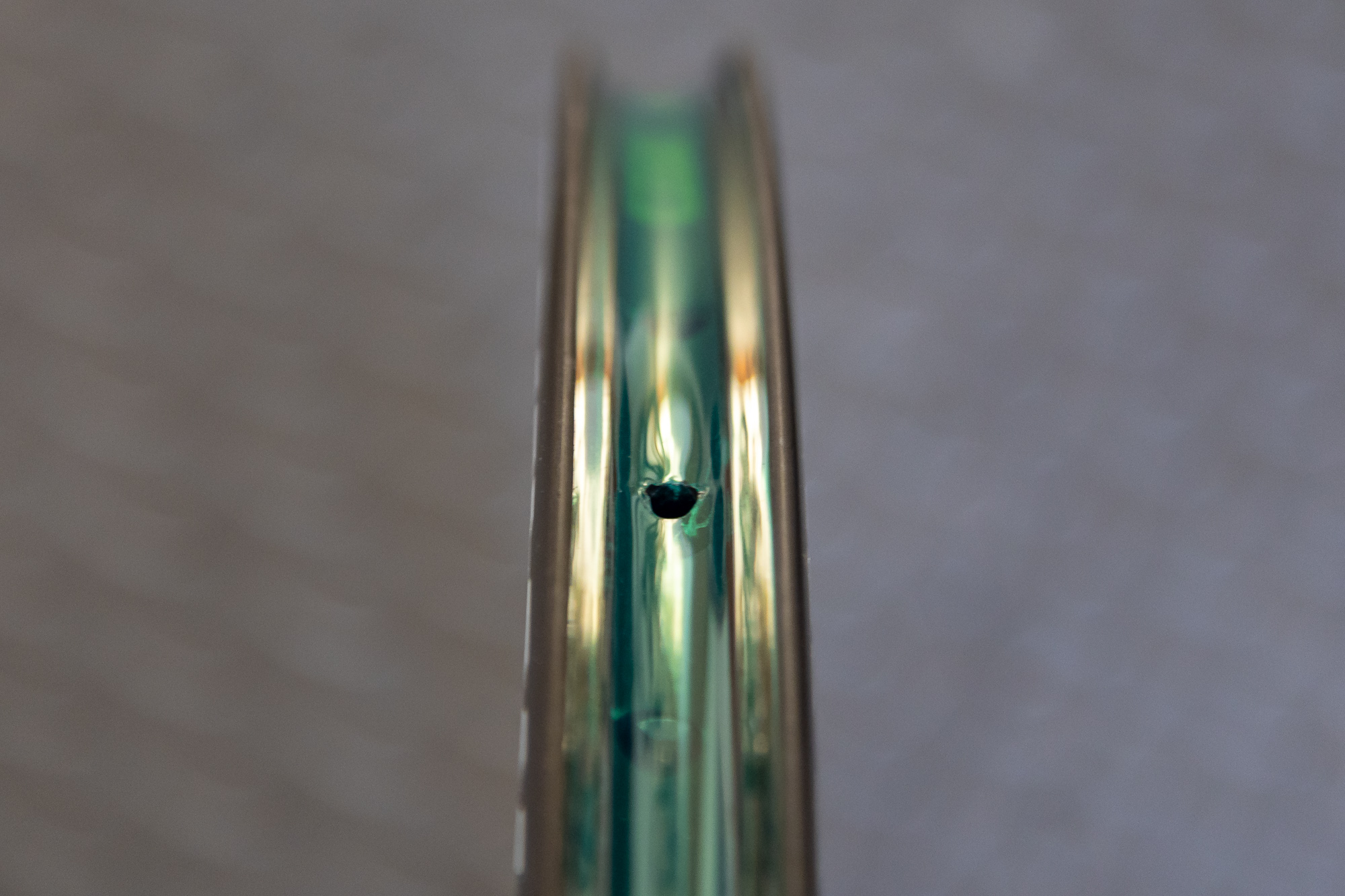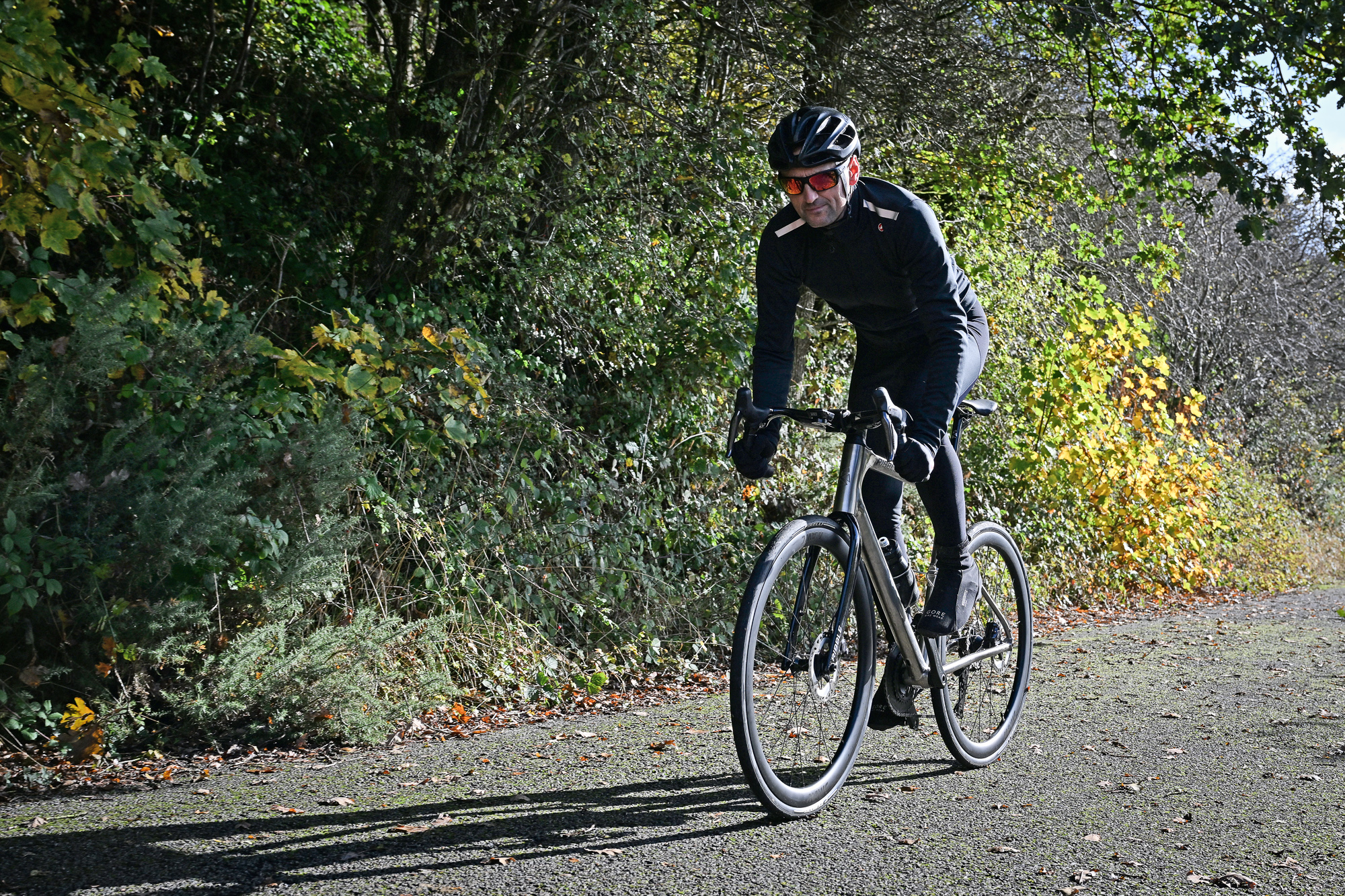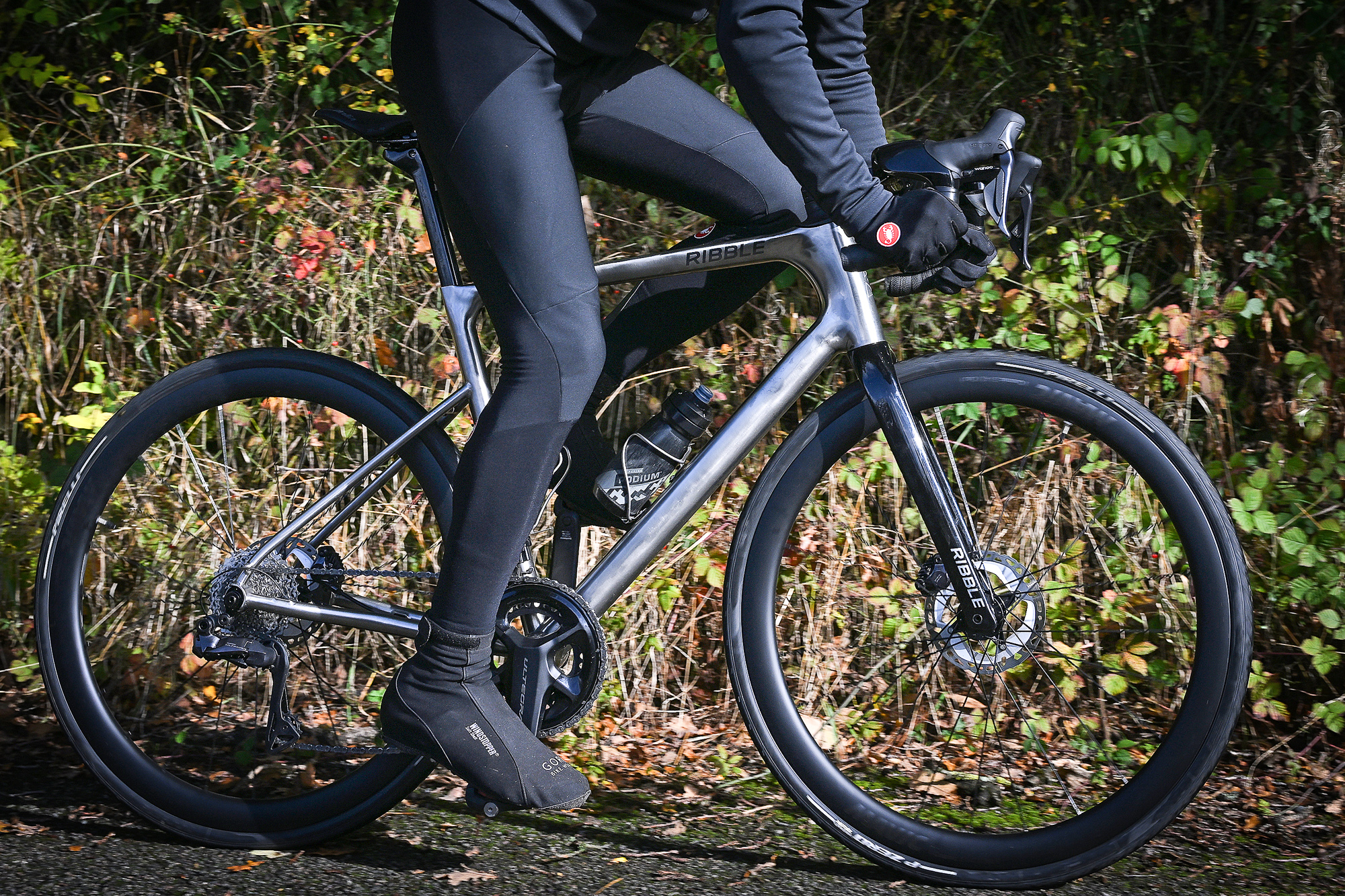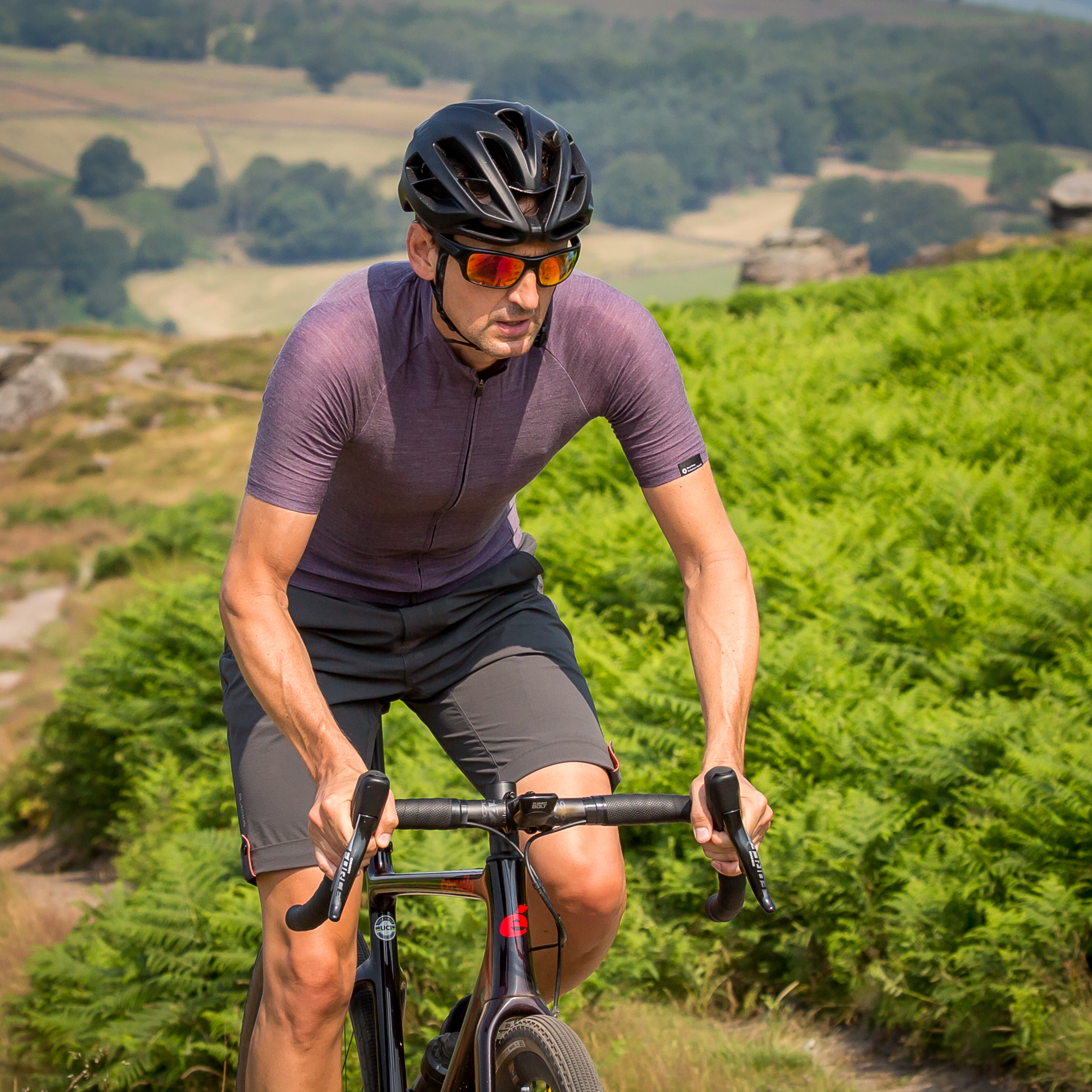Mavic Cosmic S 42 wheelset review - do the brand's cheapest carbon wheels offer good value?
As the entry point into Mavic's illustrious Cosmic wheel range, the S 42s are their only offering in the competitive sub £1,000 carbon wheelset market

The Cosmic S 42 wheelset is a safe and conservative entry route into Mavic’s carbon road wheels lineup. It neither promises nor delivers anything exceptional but works absolutely fine out on the road so mainly you are buying into Mavic’s racing heritage, knowledge and backup rather than cutting-edge tech or impressive paper specs of any sort.
-
+
Mavic heritage and know-how
-
+
Ratchet freehub
-
+
J-bend spokes for easy replacement
-
-
Heavy for the price
-
-
Relatively narrow internal width
-
-
Spokes aren't very bladed
You can trust Cycling Weekly.

With nigh on 100 years of wheel production under their belts, it is fair to say that Mavic knows a thing or two about round bits for bikes, and they produce some very expensive options. However, the Cosmic S 42 is the least expensive set of road wheels in Mavic’s carbon line-up, which now features nearly a dozen models. It is intended as a trickle-down product with some of the features and tech of the pricey wheels at a fraction of the cost, albeit at the expense of some weight and performance perhaps.
Furthermore, as a more recent model, it actually improves on the high-end Cosmics in some areas. For instance, it is wider internally than the range-topping Cosmic Ultimate 45 which costs over £4,000.
A nice set of carbon wheels is, aesthetically at least, probably the best upgrade you can make to a bike and a very popular one so a more affordable offering from a big brand like Mavic is always of interest.
There are two models in the Cosmic S line-up, the 42 for disc brakes and the 40 for rim brakes.
Construction
The wheels are delivered pre-taped, ready for tubeless set up with a suitable length tubeless valve in each box too. However, there are no spare spokes included which feels a bit mean at the price. There is also a small piece of card with a QR code that leads to a 40 page technical document/instruction manual, so Mavic should be applauded for this and for not including reams of paperwork with each wheel.
Claimed weight for the road wheelset is 1,660g - 775g front, 885g rear. My scales said 777g plus 897g plus, so 1,674 for the pair, but as this included rim tape then Mavic’s numbers are fair enough.

The ratchet freehub should offer quicker engagement and better durability than pawls
As the name suggests, the carbon rims are 42mm deep with a fairly conservative 21mm internal width and contrasting white ‘Mavic Cosmic S 42 Disc’ lettering. They are a hooked design, so can be used with tubeless or tube-type tyres and the profile, like all modern aero wheels, is a blunt U-shape. Mavic’s U is less blunt than some though, probably in part due to the rim’s relative narrowness.
The latest race content, interviews, features, reviews and expert buying guides, direct to your inbox!
The hubs have sealed cartridge bearings, and Mavic’s Instant Drive 360 freehub on the rear uses a ratchet system rather than pawls for quicker engagement and supposed improved durability. Mavic uses this design in many of their wheels so spares and replacements are available and basic servicing looks to be straightforward enough.

Mavic’s website variously states that the Cosmic S 42s have ‘wind-tunnel-tested flat spokes’ and ‘bent radius, round (front and rear)’ spokes depending on which section you read. The truth is that my wheels had slightly curious ‘squared off’ spokes that did not feel round but nor were they as flat or aero as something like a Sapim CX-ray. They were double butted though with a J-bend so should be easy to replace if necessary. Steel nipples lace the spokes into the rim.
The ride
I mounted a pair of tubeless 28mm Goodyear Eagle F1 R tyres on the Cosmic wheels, using the supplied tubeless valves with only mild trauma as to whether I should centre the valves with the large lettering or the whole of the branding. These valves are a bit on the basic side, and it took a little bit of effort to get them to seat and seal properly - they don’t offer the extra features that many of the best tubeless valves do and an upgrade would be worthwhile. Once sealed and airtight, I headed out of the door, onto the worst roads in the UK apparently!

Conservative 21mm internal width
Despite the plethora of potholes, cracks and general detritus on my local roads, the Cosmics stayed straight and true over the test period and didn’t suffer from any other issues either. Of course, this shouldn’t be surprising and I would have expected any half-decent wheelset to have survived similarly let alone wheels from a renowned manufacturer; wheels should last tens of thousands of kilometres with the right care, especially now that disc brakes have removed any wear issues from the rim.

The Cosmic S 42s were untroubled on poor roads
Freehub noise is a divisive subject, but if you prefer a more muted musical accompaniment to your rides then the low thrum of the Mavics might appeal more than the high-pitched buzz some wheels make.
A ride in the blustery remnants of Storm Éowyn reminded me why deeper wheels are not always a good idea. I certainly had to concentrate more than usual, even though the winds were supposedly down to about 45kph. The slightly narrow width, which results in a sharper U than some modern wheels, might have contributed to this, although, to be fair, it wasn’t ideal conditions for any style of aero wheel!

42mm deep is a good, all-round depth for general riding
In more appropriate weather, the Cosmic 42S wheels were, well, fine; plenty stiff enough, sufficiently resilient to the bad roads but not noticeably uncomfortable or jarring. However, they didn’t really excite or encourage either - they held speed pretty well but lacked a bit of urgency when it came to accelerations or efforts uphill.
Value and conclusions
It’s hard to get very excited about the Cosmic S 42 wheelset. It doesn’t claim to do anything exceptionally well, it weighs a bit more than many circa £900/ $1000 road wheelsets and doesn’t offer the width that some modern rims do. Nor are the spokes properly bladed and Mavic makes no particular claims about aerodynamics. On the other hand, it is a well-made, nice-looking wheelset with a rapid engagement ratchet freehub from a long-established brand with a great heritage, which should ensure continuity of spares and backup. So if you value these elements more than weight and width, then it is a reasonably priced entry into Mavic’s carbon wheel range.
The word ‘aerodynamic’ does crop up in Mavic’s marketing of the Cosmic S 42s, but without any figures or exact claims (for what they are worth). From their shape, I would assume that they do confer some wind-cheating advantage, but I wouldn’t like to guess how much.
Zipp’s 303 S is lighter and wider for a bit more money if you want to stick with big brands or smaller companies like Hunt and Scribe can save you money and weight if you are happy with what they offer.
The ride was ok but not inspiring and it lacks a USP to make it stand out from the crowd in the $1000 / sub £1,000 carbon wheel market. It makes sense for Mavic to have introduced them to their line-up as an entry-level wheelset for the brand, but a bit of searching should result in more compelling alternatives for that kind of cash or similar specs for less money.
Tim Russon is a writer and photographer who has worked in the outdoor and cycling industry for over 20 years. He can’t remember a time when he didn’t own a bike and has road, gravel, mountain and retro bikes in the shed. His favourite place to ride is the Dolomites, a simply stunning area which has breathtaking views and incredible roads combined with lovely food and great wine.
He prefers long, hot climbs in the big mountains, but as he lives on the edge of the Peak District he has to make do with short, cold climbs most of the time instead.
You must confirm your public display name before commenting
Please logout and then login again, you will then be prompted to enter your display name.
